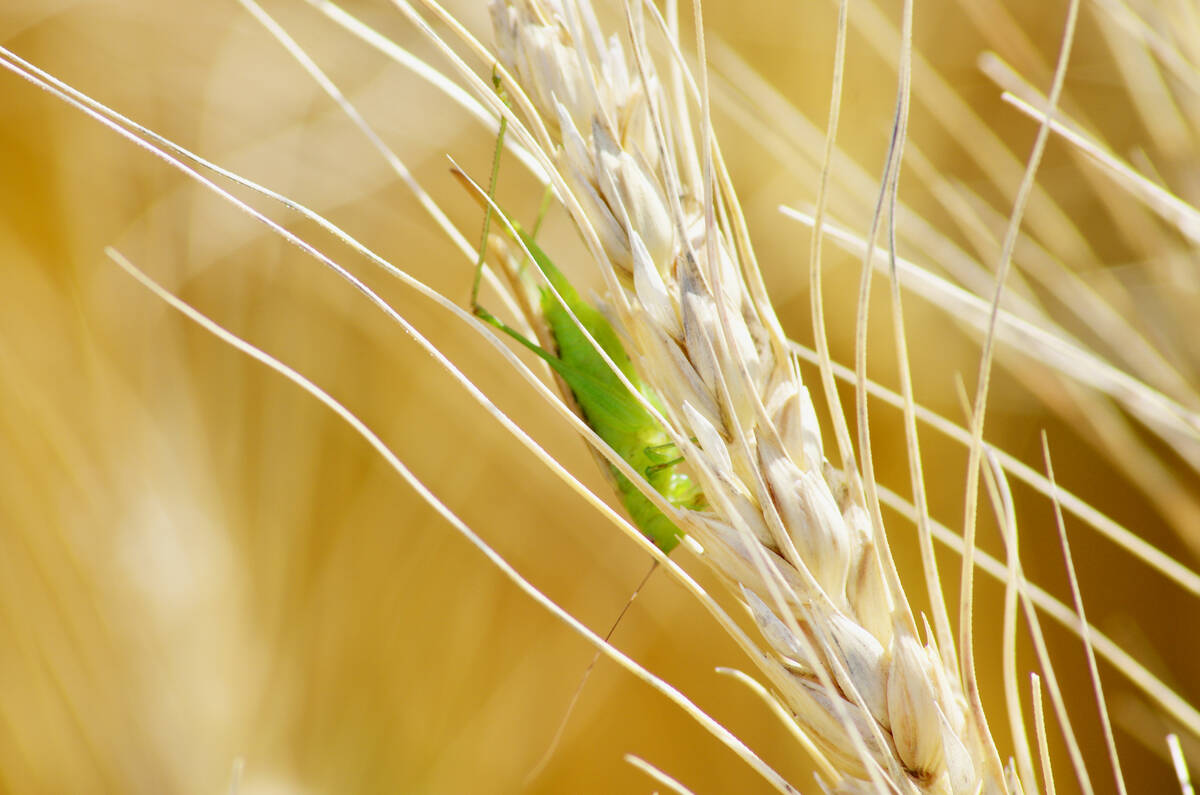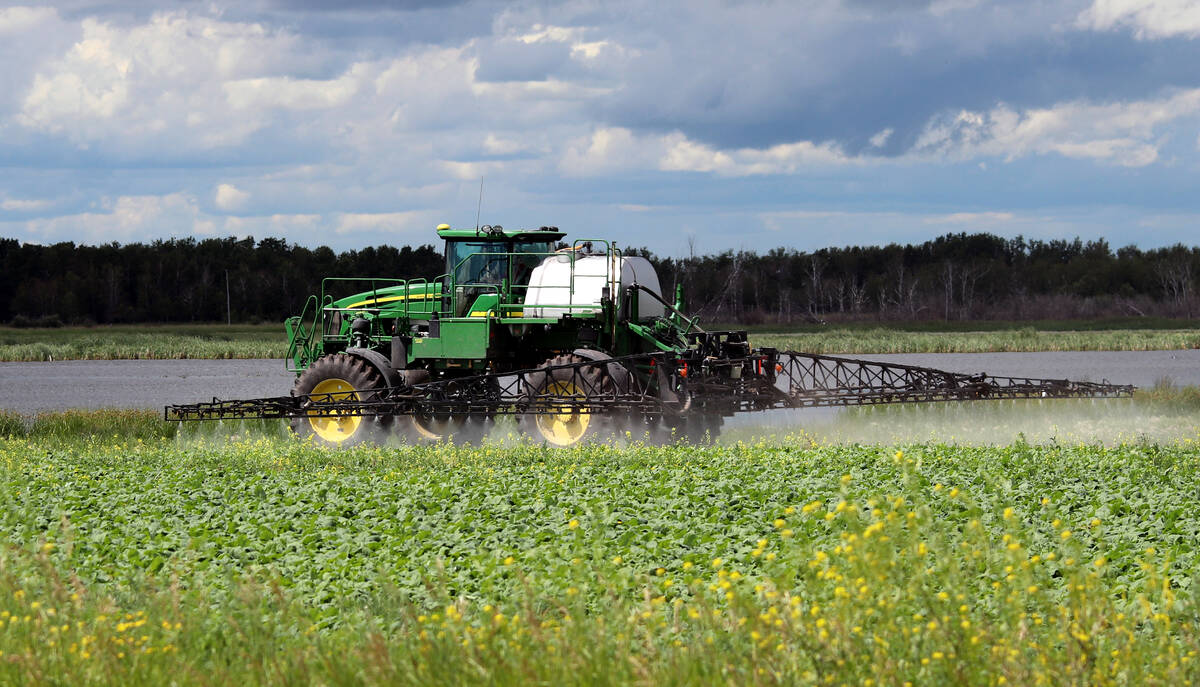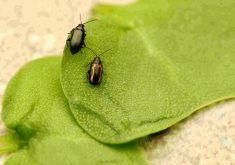Grasshoppers in Manitoba have gotten an early start.
The May 22 pest update, the first of the year released by Manitoba Agriculture, noted that pest species had an early hatch this year, thanks to last year’s warm fall and the carryover of those warm temperatures into spring 2025.
There was some reason for optimism: parts of the province had seen heavy rain and cooler temperatures at the time of the report, both of which might limit the province’s grasshopper population, “but it is likely that most of the eggs of our pest species are still unhatched, and the egg stage is very resilient to excess water.”
Read Also

Still hard to predict precise fertilizer payback
Despite decades of advances, international research finds no clear answer for where and when adding nutrient will fail to boost growth.
Flea beetles and cutworms overshadowed grasshoppers in the following week’s report
WHY IT MATTERS: Integrated pest management is meant to keep pest weeds and insects under control, without the farmer wasting money or risking harm to helpful factors like beneficial insects.
According to maps put out by the Prairie Pest Monitoring Network, Manitoba did have some moderate risk areas coming into 2025. Surveys last year registered eight to 12 adults per square metre in patches of western Manitoba, the largest in a patch near Brandon. Most of the southwest and parts of central Manitoba returned adult grasshopper counts between four and eight insects per square metre to lay overwintering eggs. The rest of the province sat at under four insects per square metre.
The bigger grasshopper risks were in the Western Prairies. Patches of western Saskatchewan and Alberta wracked up anywhere from eight to over 24 grasshoppers per square metre.
Controlling grasshoppers
Farmers who spray for grasshoppers this summer need to make sure they don’t do more harm than good, says a professor of environmental science at the University of Lethbridge.
“I hope we don’t get into an outbreak situation for two reasons, because huge fields being sprayed is a loss of agriculture,” said Dan Johnson.
“I also don’t want to see the non-pest grasshoppers wiped out either because they support the wildlife for food. Those non-pest grasshoppers actually build up natural enemies of the pest grasshoppers. If the non-pests are left unmolested, then they can keep the outbreaks less frequent. It’s long-term, low-level suppression.”

Unfortunately, the pest species of grasshoppers lay far more eggs than the non-pest ones, making for an uneven battle field in suppression.
“The ones that are out there that aren’t pests, they don’t lay many eggs. They don’t eat widely in crops, they are sometimes quite selective,” said Johnson.
“The ones that are pests, they lay 200 eggs instead of 12. Even at two per cent survival at 200 eggs, you are quadrupling their population.”
Control methods can be implemented once destructive grasshoppers such as spur-throated, migratory, packard, two-striped and clear-winged, are identified in the field.
Temperature, rainfall and snowfall each play a major role in determining the severity of a grasshopper outbreak, says an Alberta government website.
Temperature is the most important factor. Warm days during the previous spring and summer determine how quickly the parents of the following year’s grasshoppers develop and begin to lay eggs.
Under hot, dry conditions, a small grasshopper population may do as much damage as a large grasshopper population will under cool, wet conditions.
Beneficial insects
Natural enemies can help provide some control. Some predators attack grasshopper eggs in the soil, while others attach to the nymphal and adult stages.
Among the most important egg predators are bee flies, blister beetles, ground beetles and crickets.
Common field crickets eat grasshopper eggs, destroying up to 50 per cent of them in some scenarios.
Bee flies and blister beetles deposit their eggs in the soil near grasshopper eggs. When the larvae of these predators hatch, they locate the grasshopper egg pods and feed on them. If bee flies and blister beetles are abundant, they may destroy up to 80 per cent of eggs in a localized area.
Spiders, some wasps and many birds feed on grasshoppers and consume large numbers of nymphs and adults.
If the grasshopper population is surging, though, Johnson said, those beneficial insects are unlikely to provide enough control.
When and how to control grasshoppers
Extension materials set the economic thresholds for grasshoppers at eight to 12 destructive grasshoppers per square metre in a cereal field.
Johnson thinks that’s too high, encouraging uneccesary spraying and risks producers mistakenly adding non-pest species into the count. Instead, he suggests producers look at the actual damage when deciding to spray.
Most pesticides registered for grasshoppers now tend to be more selective.
“Their list of things they can use is getting smaller and smaller,” Johnson said.
”It must be stressing them out because in the future, if the numbers of grasshopper outbreaks goes up in intensity, we have to have some sort of solution. It is also often true that grasshoppers will build up around a field and move in, so treating the edge of the field will help.… But, it’s farmer by farmer and observation by observation. You have to take a look and find where the damage is.”

The Alberta government website says communication with neighbouring farmers is key when using chemical control.
That resource urged producers to try to get groups of farmers in one area to agree to spray so that grasshoppers will not migrate from unsprayed land onto sprayed fields.
Johnson cautioned that’s only applicable if all the farmers involved have problematic numbers and damage. Otherswise, it’s extra spraying when spraying may not be needed.
Extension materials also put optimal spraying temperature is between 20 and 25 C.
Farmers should make sure that the insecticide they are using is registered for that crop.
They should also be careful in their expectations.
If farmers are seeing high populations, the numbers that are left after spraying with an insecticide, even with a 90 per cent kill, may still be higher than the economic threshold.
It might not be that the chemical failed — it could be that the numbers were high to start with.
Insecticides may harm beneficial insects needed to pollinate some crops, so avoid spraying when the crop is in bloom, farmers were also cautioned.















